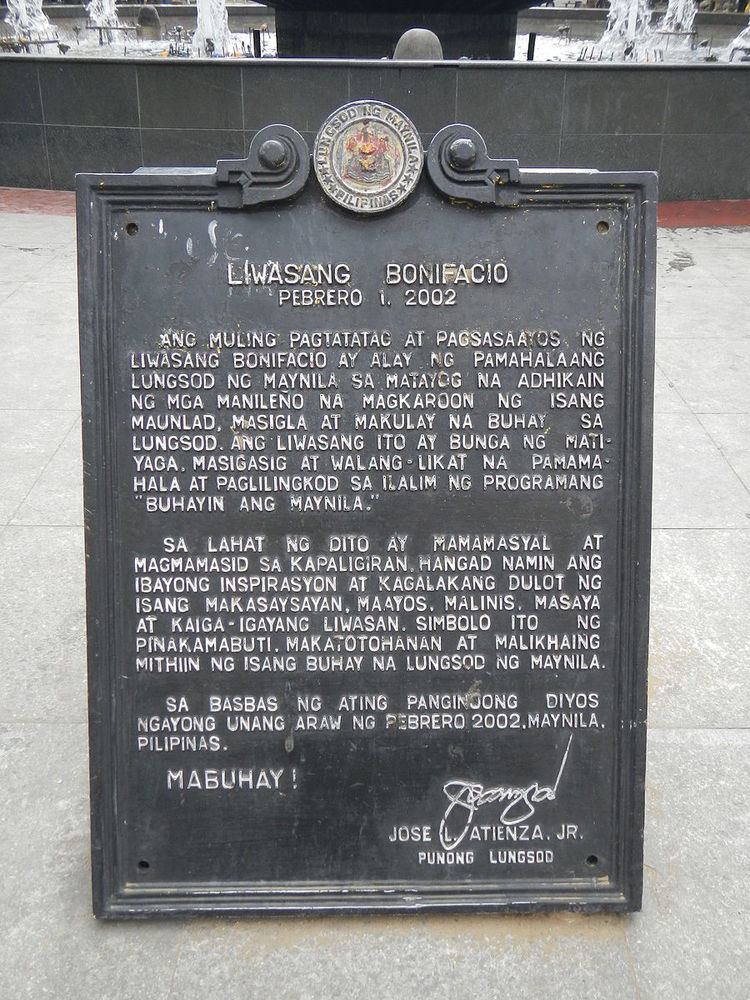 | ||
Parian or Pantin, historic name Parian de Arroceros (Arroceros: cultivators of rice, Spanish) was an area adjacent to Intramuros built to house Chinese merchants in Manila in the 16th and 17th centuries during the Spanish occupation of The Philippines. The gate connecting it and Intramuros (where most of the Spanish colonial and administrative government was located) was called Puerta del Parian.
Contents
The Parian rapidly became the commercial center of Manila. The community had more than a hundred shops comprising the Chinese silk market, small shops of tailors, cobblers, painters, bakers, confectioners, candle makers, silversmiths, apothecaries and other tradesmen.
The location of the Parian moved from time to time and persisted until 1790, when it was torn down to make room for new fortifications on the northern side of the Intramuros. The first Parian was situated in the current location of the Arroceros Forest Park along the banks of the Pasig River. The second Parian was built in 1583 after the first Parian burned down. The original location is now called Liwasang Bonifacio (Plaza Lawton). The Chinese community later moved to other parts of Manila including Binondo, Sta. Cruz, and Tondo. The second-to-last Parian was shaped liked an octagon and was also built near Pasig River.
Name
The name parian or padian was derived from old Malay word puntahan, pariyan or padiyan meaning "to go".
Arroceros is derived from the Spanish word for rice cultivators
Current location
The current areas of Lawton and Arroceros Forest park in Ermita district occupy the area previously known as Parian. Part of the former Parian is also occupied by the Metropolitan Theater.
As per the map of Manila published in 1671 published by the Archivo General de Indias, the entire area to the North East between the walls of Intramuros and Pasig river encompassed Parian
